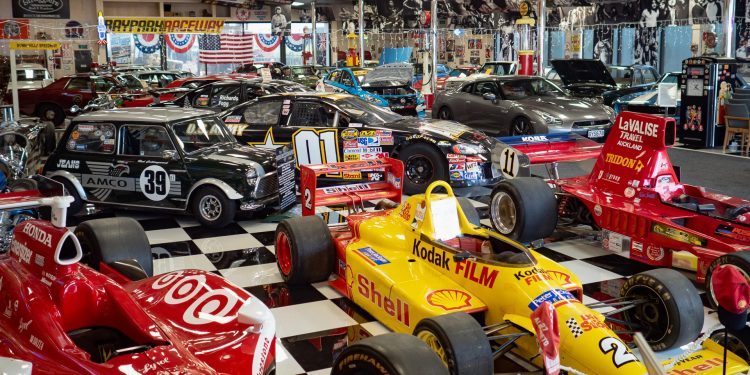Ross Bros Museum Cambridge – an incredible racing and muscle car collection
Words/Photos: Harrison Wade
Sometimes you wonder what cars would say if they could talk, and that’s exactly what was on our mind during our visit to the Ross Bros Museum. It’s a place filled to the brim with metal and rubber that could tell a thousand stories, if only.
Lucky for us, we had a translator on hand who knew exactly what these history books on wheels had to say.
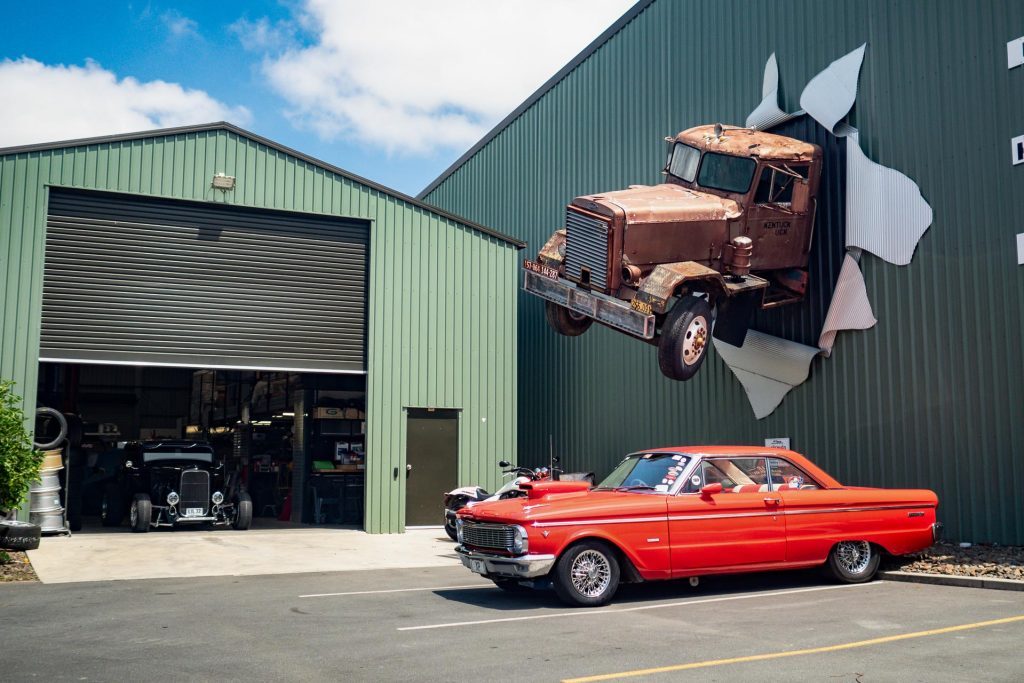
Located just outside Cambridge, Waikato, in an unassuming industrial estate, the museum itself isn’t actually run as a business but rather it’s a private collection of classic muscle and race cars.
And they’re all there along with myriad excavators and bulldozers, which is how the museum came to be.
If you aren’t familiar with the Ross family, they’re behind C&R Developments, an earthmoving business founded by four brothers Mike, Tony, Tim, and Simon – each of whom has quite an eclectic taste in cars. They are always keen to have guests over for a visit.
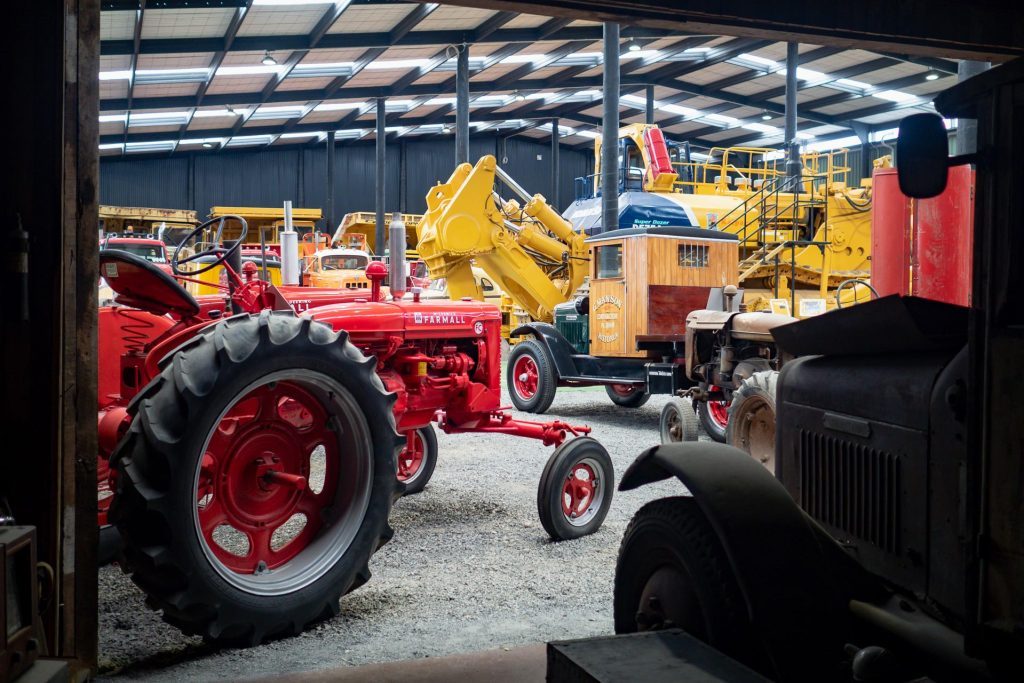
A welcome fit for a racer
Walking through the door, we were greeted with walls clad in automotive and classic rock memorabilia, an American-style kitchen diner, and Scott Dixon’s 2005 G Force IndyCar.
According to Gary, our tour guide for the day, this is probably the highlight of the collection as it’s not often that someone twists the arm of Chip Ganassi to relinquish a prized possession.
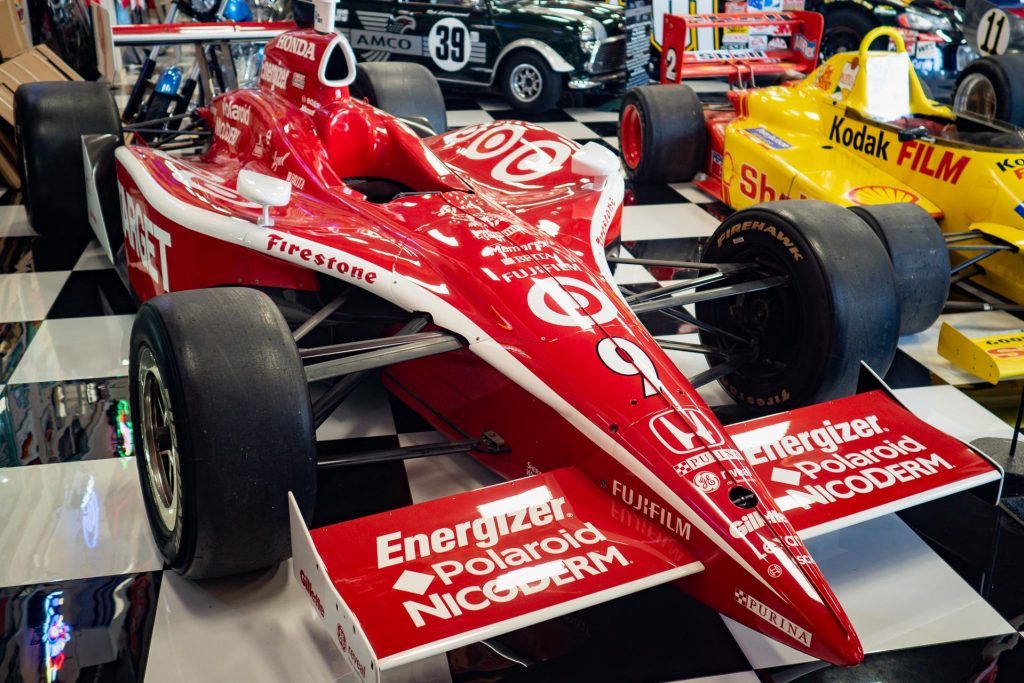
Next to the Iceman’s former office sits Kenny Smith’s Lola T332, a car in which he has contested various Formula 5000 races and earned him a few trophies over the years.
Moving up the row and we came across the shell of an old Chevrolet Monte Carlo SS NASCAR that the Ross brothers gladly adopted after it had its underpinning stripped out for a local project.
And that’s followed by Angus Fogg’s and the late Jason Richard’s Bathurst 1000-competing V8 Supercar, the #777 Team Kiwi Holden Commodore.
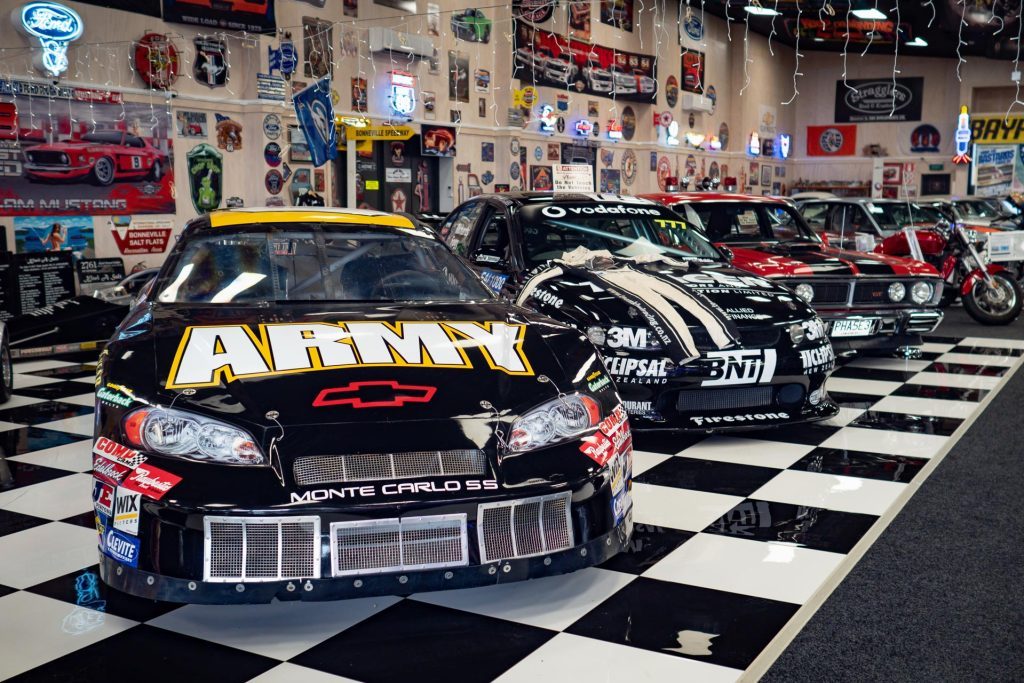
While the cars do most of the story telling, there’s plenty of automotive and sporting paraphernalia on display to keep your eyes busy too, including merchandise signed by the likes of three-time Supercars Championship winner and current IndyCar driver Scott McLaughlin.
Friend and family affair
Continuing into the depths of the collection, we notice a few of the cars on display differ from images we’ve seen online. That’s because many of the exhibitions you’ll find here are on loan from friends of the Ross family.
One of the most unassuming cars is a 1970 Ford Zodiac Mark IV. It was purchased by Tony Ross in 1972. However, it wasn’t long before the original 3.0-litre V6 was pulled out and replaced with a 454ci V8 from the General.
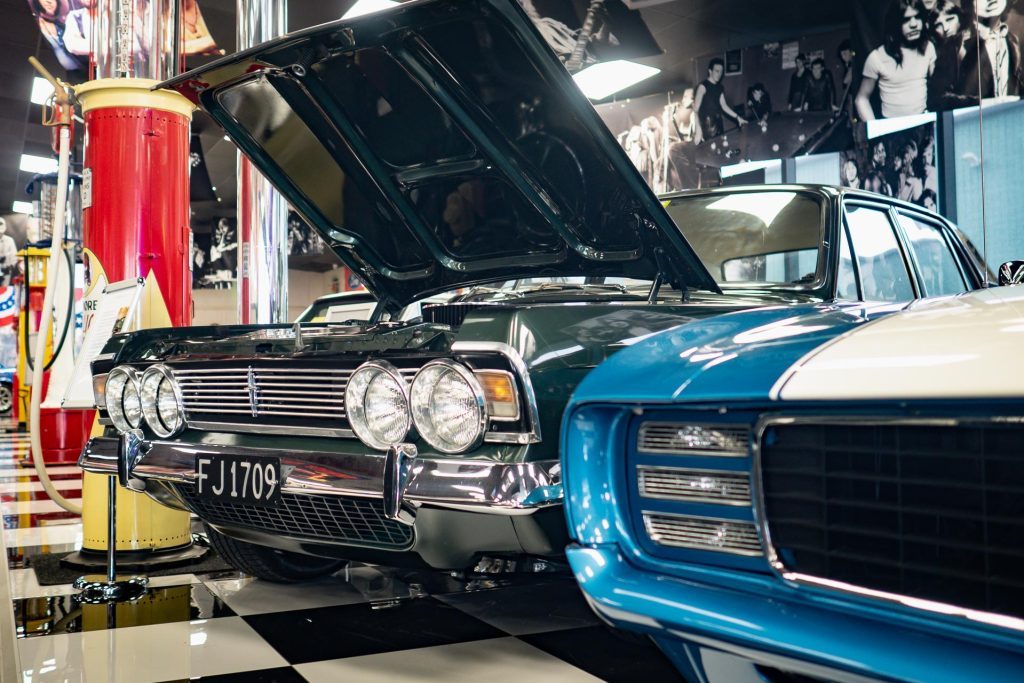
Other modifications include a custom nine-inch rear axle that was converted to an independent suspension set-up. This was something that, at the time, had enthusiasts from all over the world contacting the family wanting to know more about it.
There were no internet forums back in those pen and paper days!
What makes this Zodiac arguably one of the most special cars in the room is the fact that Tony lined it up next to his father, Jim Ross, at Meremere Dragway. Ross Senior was behind the wheel of his brand new 1972 Aston Martin DBS V8.
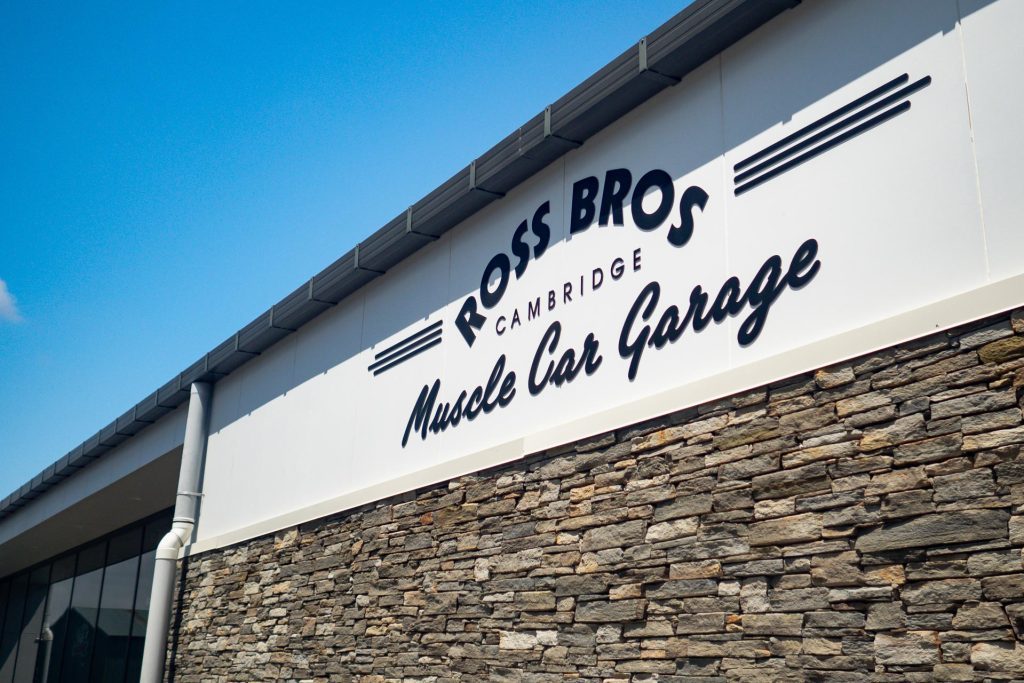
The kicker is that Jim didn’t know it was his son sitting next to him as he had his helmet on. When the lights went green, Jim was subsequently taken to the cleaners, something that apparently “pissed him off no end” considering the DBS he was driving was regarded as one of the fastest production cars in the world at the time.
“They got to the other end of the drag strip and Jim just went straight back to the motel, packed up all his bags, headed home, put the Aston in the workshop, and said: ‘I want more power out of this. I just got beaten by a Mark IV Zodiac’, Gary told us.
Since the Zodiac’s drag racing days, the car has undergone a full restoration courtesy of the boys in the onsite workshop and now runs a more modern LS6 V8.
Of course, the engine didn’t go in untouched and now the Zodiac makes quite the smoke show at C&R Developments’ Christmas event.
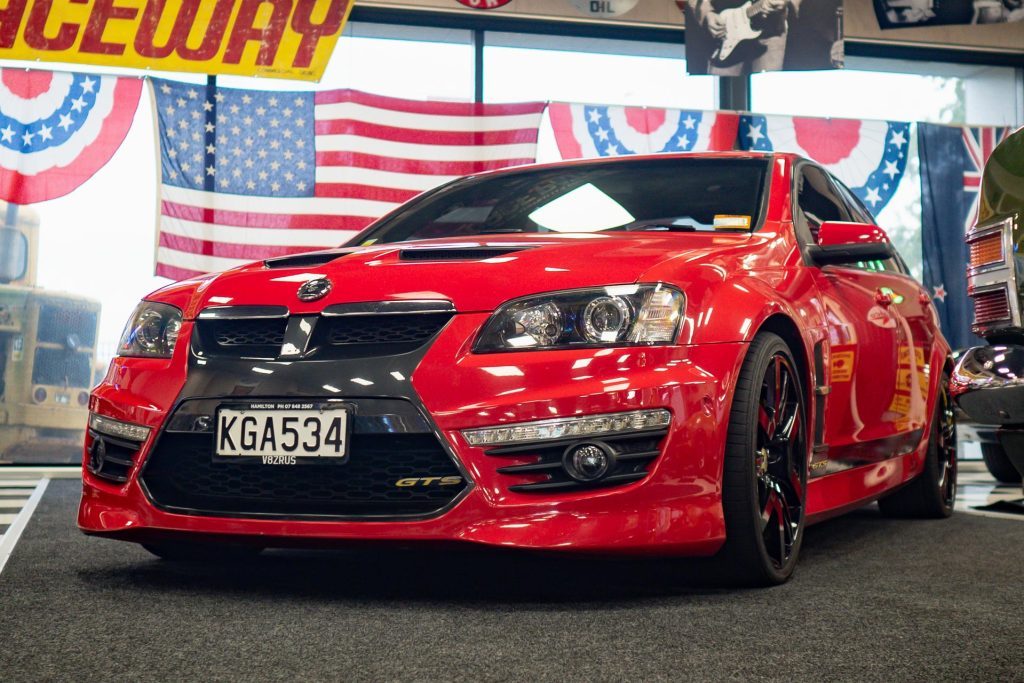
Rare muscle
Moving down the line, you’ll find another couple of fast Fords, including a 1968 Mustang GT 428 Cobra Jet, as well as a one of one hundred 1964 Ford Fairlane Thunderbolt, the same model that earned the blue oval brand the NHRA Super Stock championship title for that year.
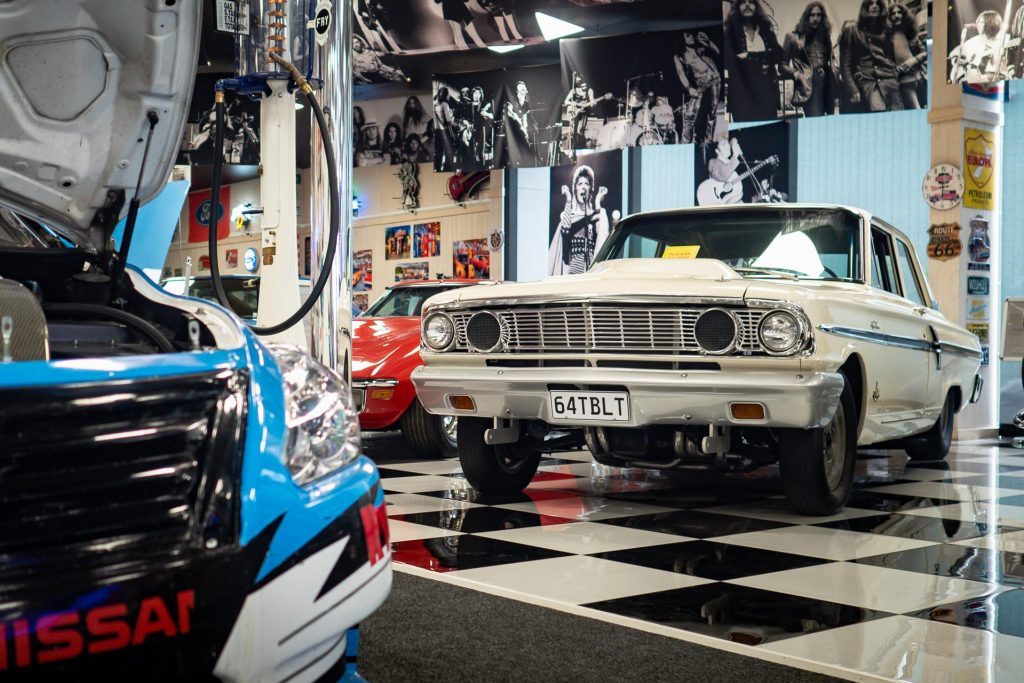
Also present are several cars from the red camp, Holden, including a pristine 1970 Monaro GTS sitting in front of its newer 2010 HSV GTS sibling tuned by Walkinshaw.
There’s also a 1988 HSV VL SS Group A SV of which just 750 were produced.
On the other side of the room sits another row of legendary muscle cars, including two 1970 Dodge Challengers, one being an R/T finished in Go Mango orange, and the other a 440 Magnum clad in Plum Crazy purple.
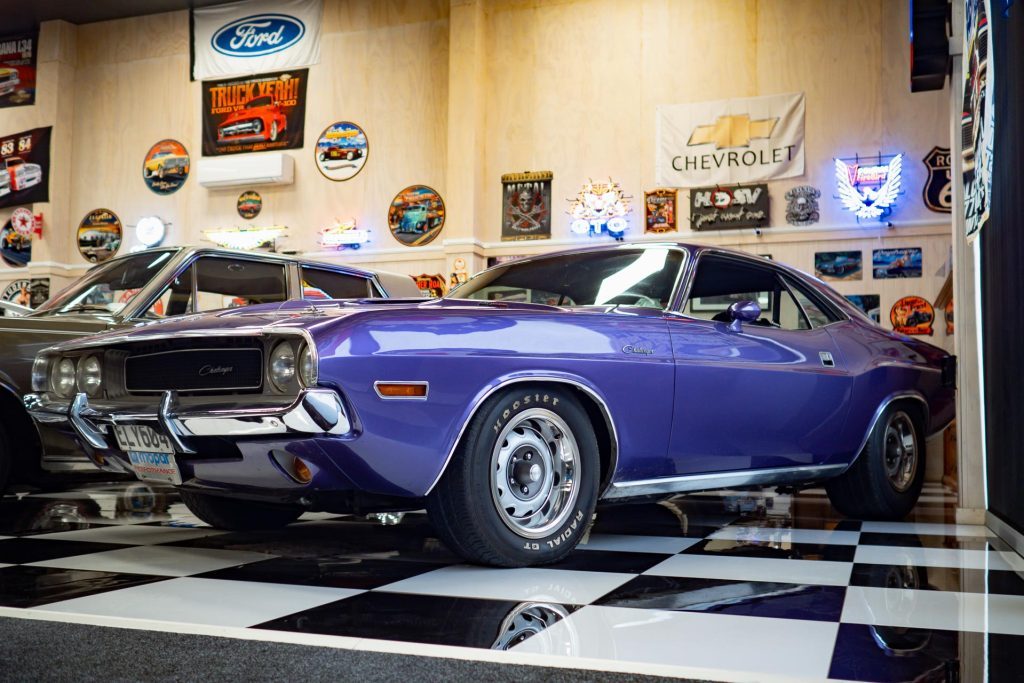
To name a few, there’s a 1970 Ford Falcon XW GT, 1975 Falcon XB GT, 1971 Corvette Stingray, and an original Volkswagen Beetle on display.
And, oh yeah, remember that DBS we mentioned earlier? Well, that’s also there and in pristine condition.
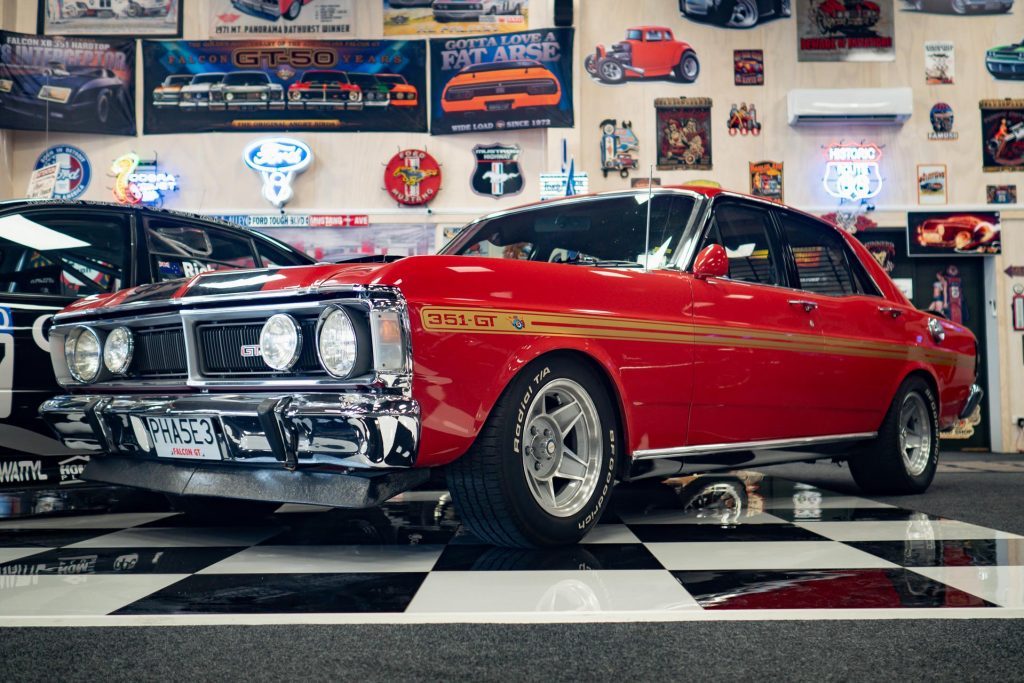
It features a 5.3-litre V8 making 239kW and 330Nm of torque, an engine that Aston only fitted to 402 DBSs before the model was turned into the aptly named Aston Martin V8.
The British brute could accelerate from 0 to 100km/h in 7.1 seconds, a lightning-fast time back in the ‘70s for a road car.
This facility is also an active workshop and home to several projects. One of those waiting for its turn to go under the knife is a 1970 Dodge Coronet Super Bee, which looks as if it had been left to bake in the red hot desert sun of Arizona for the past thirty-odd years.
Plans for this golden oldie include a full strip down and restoration, as well as a heart transplant with a modern Hellcat destined for the engine bay.
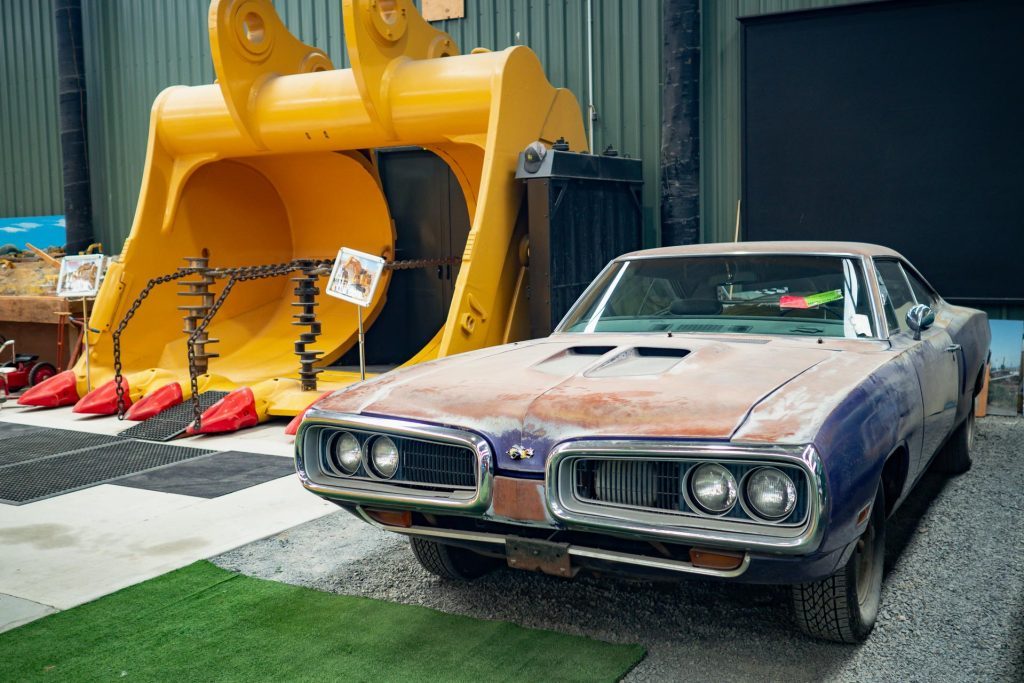
The goal is to create something similar to Kiwi racing legend Greg Murphy’s 1969 Charger that he had custom-built by Ringbrothers in the States.
Our attention (eventually) turned to a certain Triumph Rocket 3 motorbike that had its original 2.5-litre inline three-cylinder engine swapped with a gas turbine more commonly found powering the rotor blades of a Bell Jet Ranger helicopter.
Gary says the owner of the bike, a former aircraft engineer, has never quite cranked the throttle open to full and we can understand why, considering it makes 313kW and 583Nm of torque.
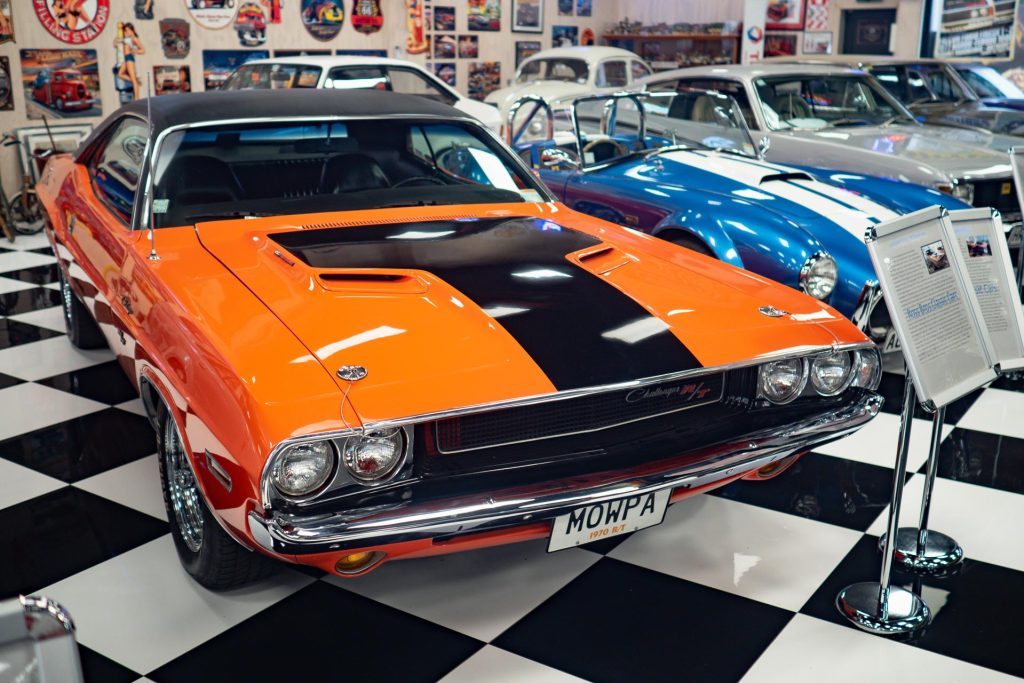
The little yellow digger
For those whose interests extend to rather large yellow things with tracks and scoops, what sits behind an unassuming sliding door will be sure to leave you in awe.
You enter the earthmoving section through a doorway in a disused excavator bucket and are greeted by one of the world’s largest bulldozers, a Komatsu 575A-2 Super Dozer nicknamed the ‘Neighbourhood Bully’.
Just two of these machines call New Zealand home, with the other still in its former owner’s possession, the Kaipara Group of Auckland.
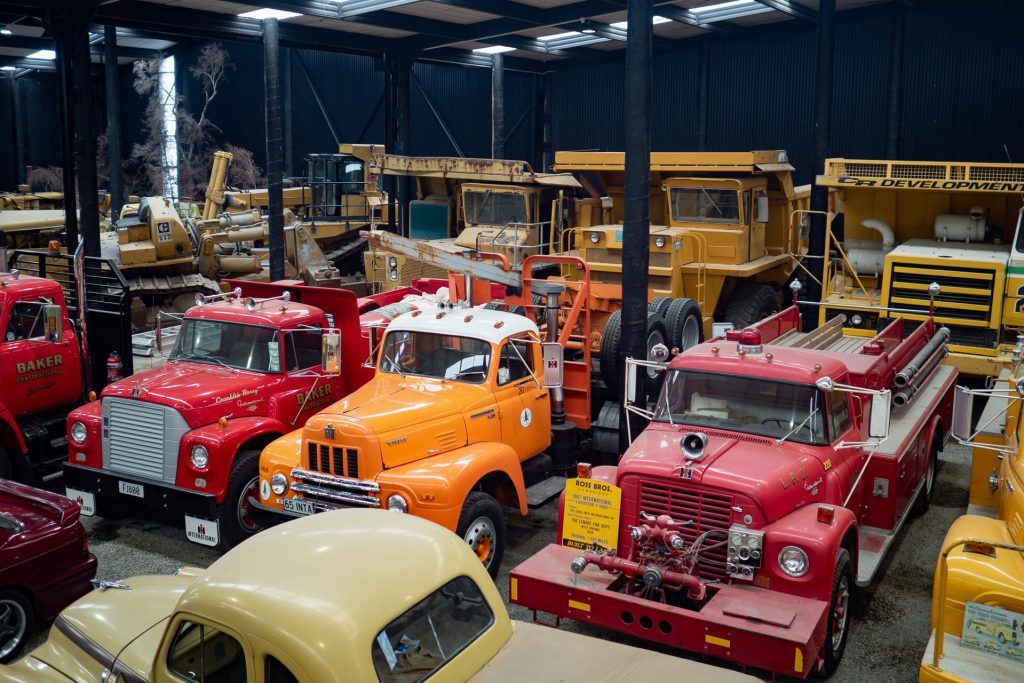
Both began their working lives in the coal fields of north Queensland before being shipped over to the Stockton Mine on the west coast of the South Island.
That was until 2013 when the world’s coal prices plummeted, rendering both Super Dozers jobless.
That’s how the museum nabbed it. A variety of other vehicles and equipment can be found in the big machinery hall, including a row of old American fire trucks, classic tractors, massive diesel generators and, you guessed it, more earthmovers, some of which have been dolled up to look like they were left in the bush for the past six decades.
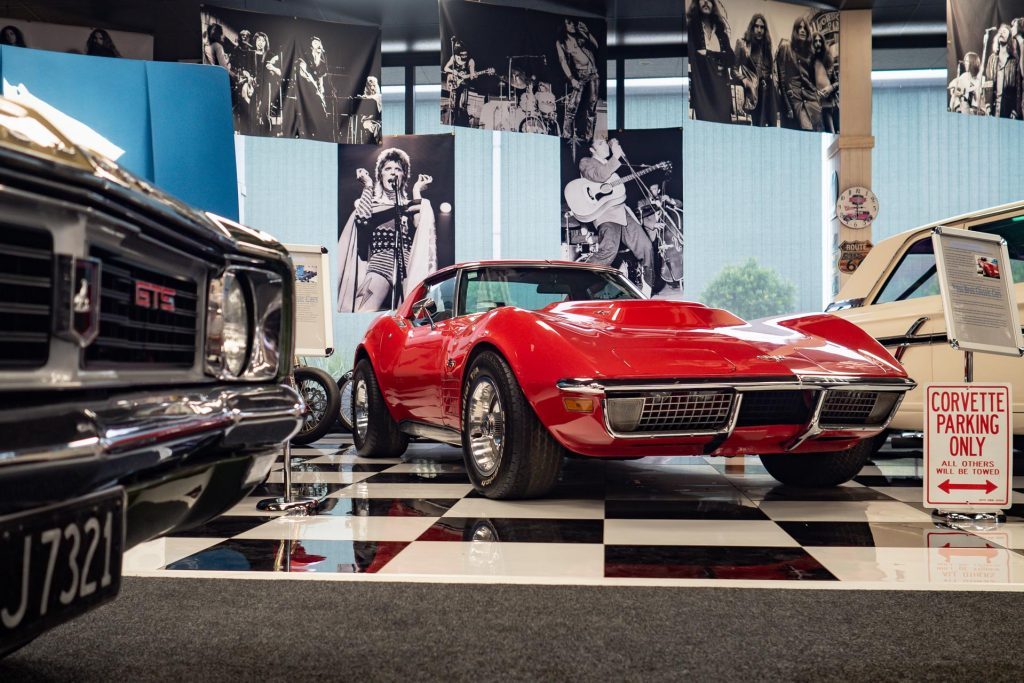
While opening the museum to the public full time isn’t on the agenda of the Ross brothers, they still have plans to develop it and turn it into their own automotive and heavy machinery sanctuary.
For example, they intend to build an old cowboy saloon inside the earthmoving shed, in addition to a mezzanine floor for entertaining guests.
It’s best to come see this place for yourself as words and images don’t really do it justice.
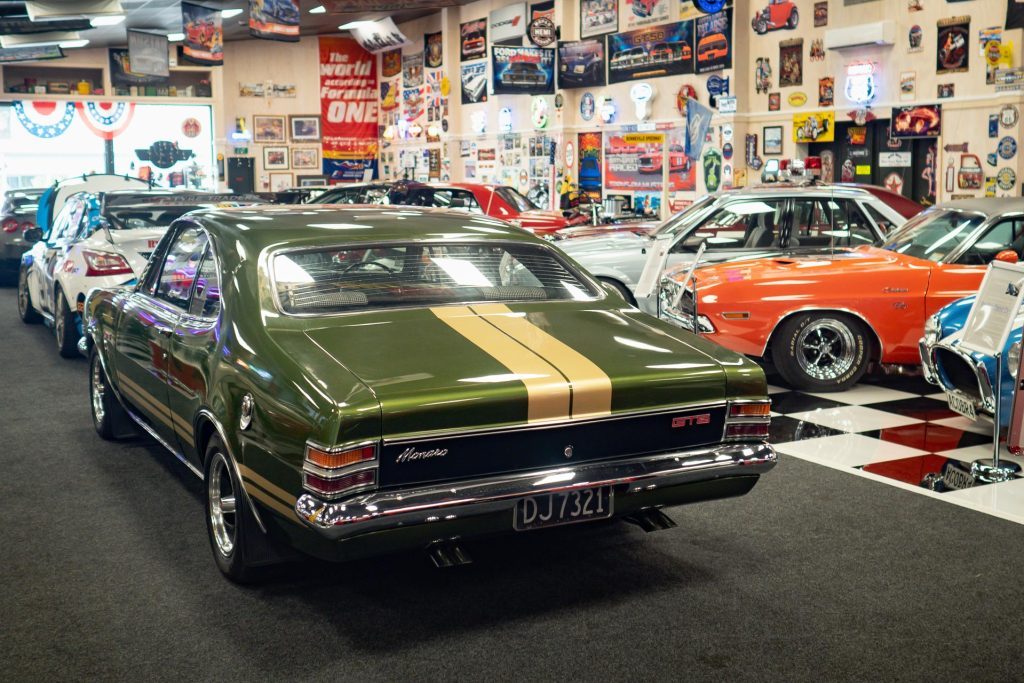
For those who want to pay a visit, be sure to arrange a time with the team at C&R Developments and bring five bucks in cash for your admittance.
This article first appeared in the March 2024 issue of NZ Autocar magazine.


